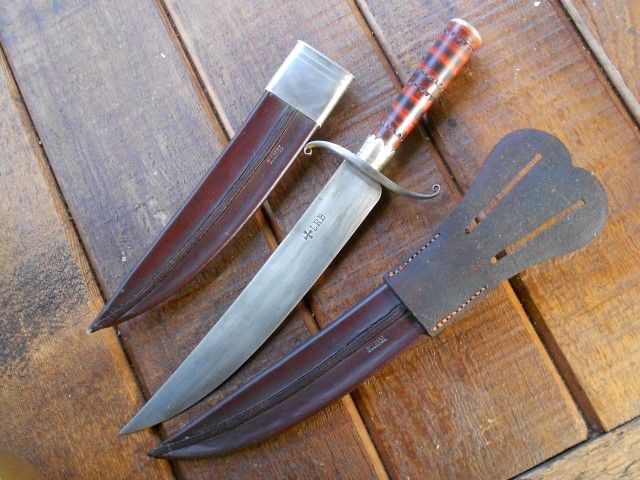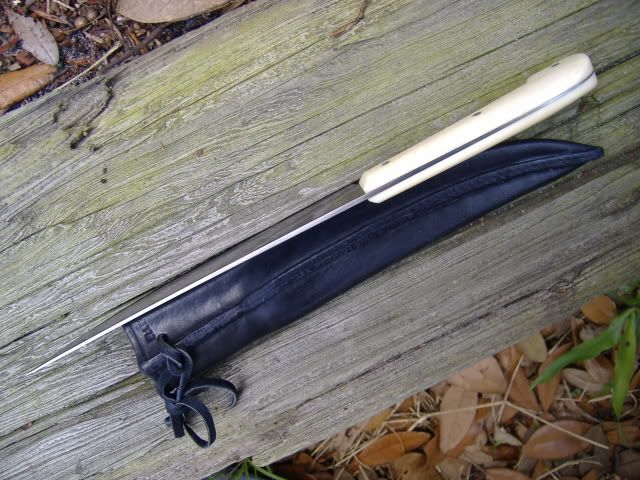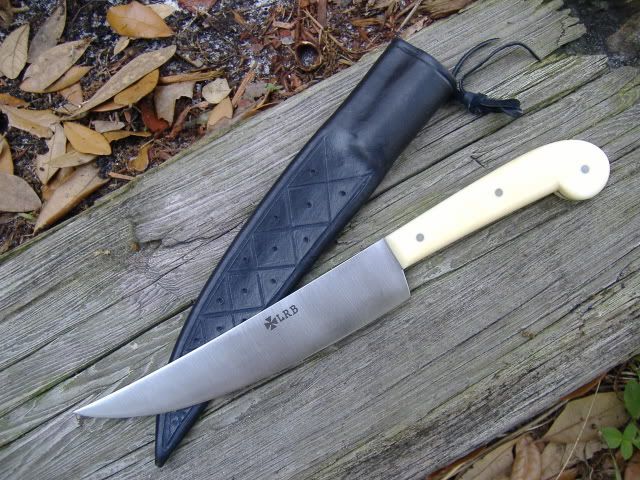SgtErv,
OK, I get it now. You just did not fully understand the directions to make a center seam sheath. Yes, there are times when the judicious use of a hammer or mallet can be beneficial ”¦”¦. :haha:
Something trained leather workers in the period would have had that frontiersmen would not have had (unless they had been trained in leather work or inherited such tools) was a “Pricking Iron.” Neil Armitage shows using a mallet to pound on the Pricking Iron into the leather, in the second of his links I posted earlier. This tool not only marks uniformly spaced points to stab with the awl, but it also partially starts the holes, making it easier to stab through the leather. It also shows even a dummy like me the angle the awl is supposed to go through the leather. I would like to make a point to thank both Capt.Jas and Labonte for informing me of Pricking Irons and how to choose and use them. Below is a link showing Pricking Irons made virtually identically to period ones.
http://boothandco.com/shop/item.php?prodID=86
I don’t know if someone would have had a Pricking Iron at your 1770’s period frontier fort settlement and possibly or even probably not. However, the angle of the Awl Stab holes is still important to uniform/good looking stitches. So I will once again link this article, written by our dear departed forum member LaBonte, that shows the correct angle to stab the Awl holes and other information on hand sewing leather. (LaBonte/Chuck Burrows will not be forgotten by many of us who Chuck so graciously helped over the years.)
http://www.wrtcleather.com/1-ckd/tutorials/_leatherstitch.html
It is hard for me to imagine a period sheath with center seam would have worn out. I can see how one could have been lost or damaged if dropped in a fire. IF the old sheath was somehow damaged or worn out, there is a very good likelihood that the frontiersman would have taken it apart and used the original sheath as a pattern to cut a new one from leather and possibly even to space the holes. This done by putting the old sheath over the leather and using the Awl in the old holes to align and prick points in the new leather.
Since you are new to working leather, I thought I might comment on the “Stitching or Marking Wheels” as sold by Tandy and others and I will link at the bottom of this paragraph. Technically these are “Over Stitch Tools” that are meant to sort of smooth stitches after you sew them. (Funny thing is if you are hand sewing correctly, you don’t really need to smooth over the tops of the stiches, but that is another matter.) Many of us, including me, have used these for up to decades to uniformly mark/lay out the places to Awl Stab holes for hand stitching. However, they were never intended to show the angle to Awl stab the holes. That’s why I linked LaBonte’s link to show the correct angle to stab the holes, above.
https://www.tandyleather.com/en/product/craftool-spacer-set
Now there were old hand tools that combined both the Pricking Iron and the Marking Wheel, but they came out after the UnCivil War. At an old tool store, I bought one and did not realize exactly what it was when I bought it. It is actually a U.S. Cavalry Saddle Repair tool and is marked U.S. The end of the wooden handle is screwed on and in the hollow space in the handle, I found extra wheels for different numbers of holes per inch. The extra wheels were tied together by very old string. The wheels all had chisel type points as found on Pricking Irons. The funny thing is I really did not understand the chisel points until I later learned what a Pricking Iron was and how it was used. I mention this special type of wheel tool as modern ones are still being made, but they are as expensive if not more so than modern reproduction Pricking Irons. Still, if anyone runs across an original tool like this, they won’t have to wonder about them like I did for many years.
Gus










